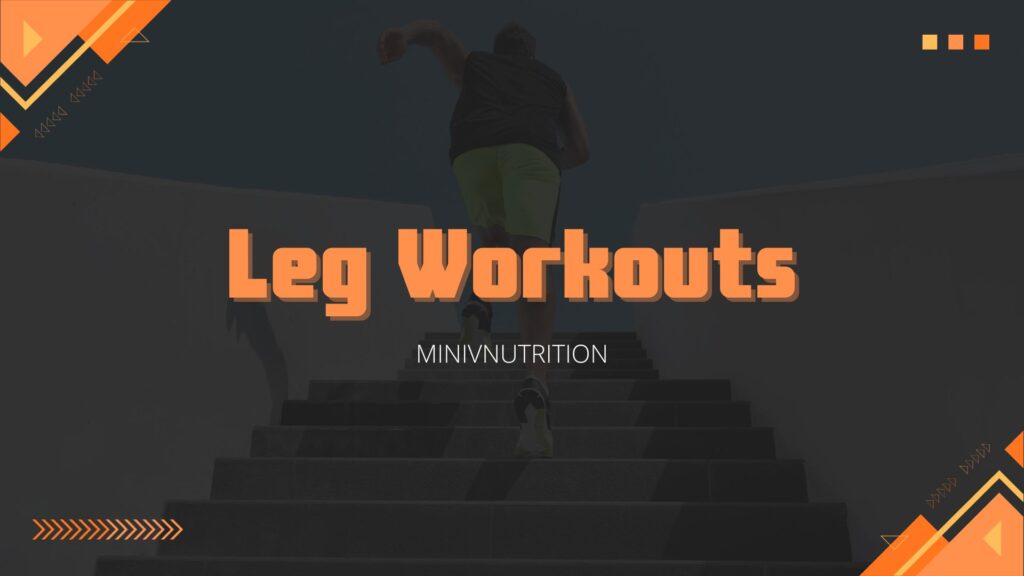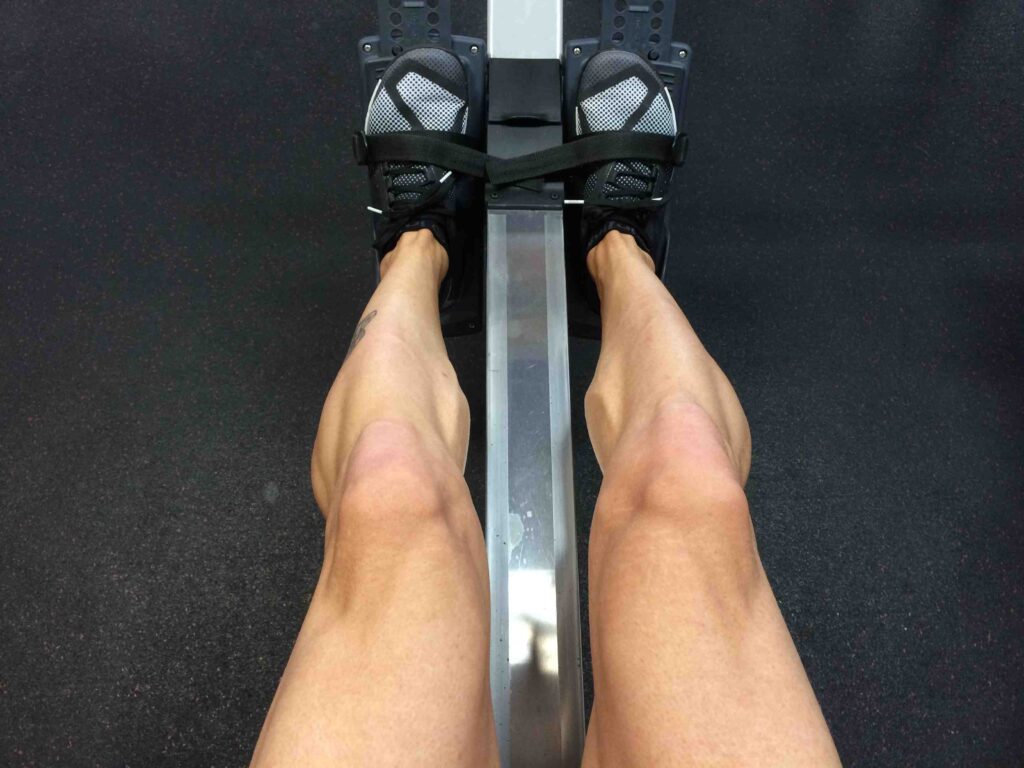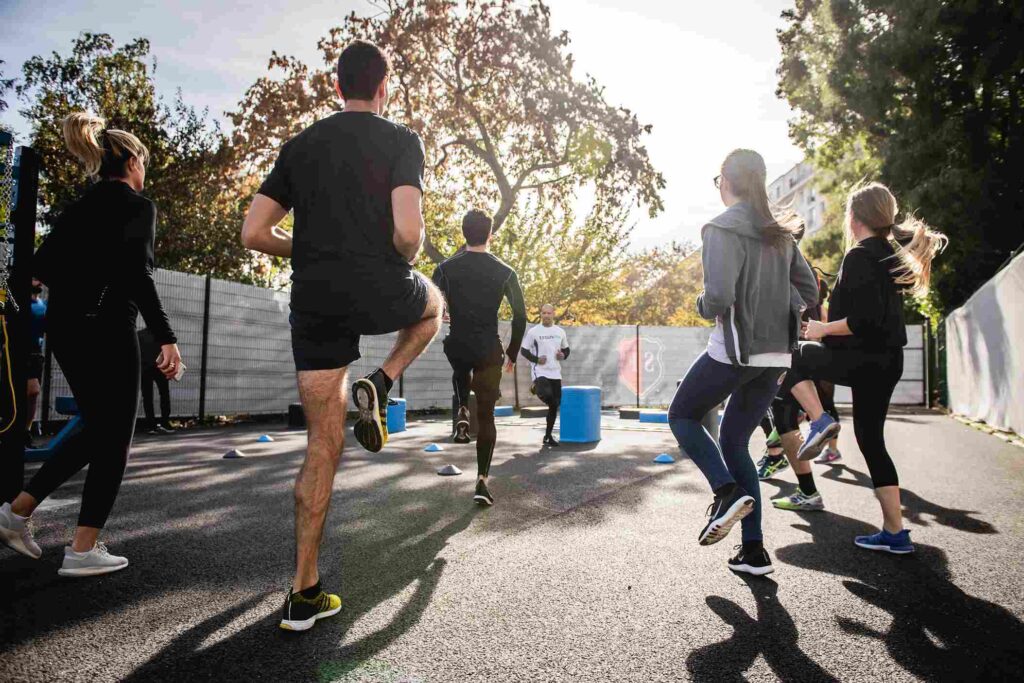When it comes to building a well-rounded and powerful physique, leg day is often regarded as one of the most crucial aspects of a fitness routine. Strong, sculpted legs not only contribute to overall strength but also improve balance, stability, and athletic performance.
In this comprehensive guide, we’ll explore the importance of leg day, the best exercises for leg development, how to structure a leg workout, common mistakes to avoid, and tips for effective recovery.

Table of Contents
Importance of Leg Day
Leg day is not just about aesthetics; it’s about functional fitness. Here’s why leg day is essential:
- Strength Foundation: Your legs house some of the largest muscles in your body, including the quadriceps, hamstrings, and glutes. Developing these muscles provides a strong foundation for overall strength.
- Balance and Stability: Strong legs improve balance and stability, reducing the risk of falls and injuries in everyday life and sports.
- Metabolic Benefits: Leg workouts engage a large muscle mass, leading to increased calorie burn during and after your workout, which can aid in weight management.
- Enhanced Athletic Performance: Whether you’re a runner, cyclist, or athlete in any sport, powerful legs are crucial for optimal performance.
Best Leg Exercises for Building Strength and Size
When it comes to building strength and size in your lower body, incorporating a variety of leg exercises into your workout routine is essential. The following comprehensive guide outlines some of the best leg exercises that target different muscle groups within the legs, ensuring balanced development and overall leg strength.
1. Squats
Often referred to as the king of leg exercises, squats are a compound movement that engages multiple muscle groups simultaneously. They primarily target the quadriceps, hamstrings, glutes, and lower back.
Variations like front squats and goblet squats offer versatility and can help you target specific areas of your legs while also challenging your core.
2. Deadlifts
While deadlifts are primarily known as a back exercise, they also engage the hamstrings, glutes, and calves to a significant extent. Including deadlifts in your routine contributes to overall leg strength and size.
3. Lunges
Lunges are excellent for balancing leg development and enhancing stability. They can be performed in various ways, including forward, reverse, and walking lunges, each targeting different muscle groups.
Forward lunges emphasize the quadriceps, while reverse lunges place more emphasis on the glutes and hamstrings.
4. Leg Press
The leg press is a machine-based exercise that isolates the quadriceps and is an effective way to build strength in this muscle group. It’s particularly useful for individuals who may have difficulty with traditional squats due to injuries or limitations.
5. Leg Curls
To ensure balanced leg development, it’s crucial to target the hamstrings. Leg curls are specifically designed for this purpose and help strengthen the hamstrings, contributing to overall leg symmetry.
6. Calf Raises
Often overlooked, calf muscles play a significant role in lower body aesthetics. Including calf raises in your routine, both seated and standing variations, can help you achieve well-defined calf muscles.
Seated calf raises emphasize the soleus muscle, while standing calf raises primarily target the gastrocnemius muscle.

How to Structure a Leg Workout
A well-structured leg workout should include:
- Warm-Up: Start with 5-10 minutes of cardio to increase blood flow to your legs, followed by dynamic stretches.
- Compound Movements: Begin with compound exercises like squats or deadlifts, as they require the most energy and effort.
- Isolation Exercises: After compound exercises, move on to isolation exercises like leg curls and calf raises to target specific muscle groups.
- Sets and Reps: Aim for 3-5 sets of each exercise with 6-12 repetitions per set for muscle growth. Adjust weight accordingly.
- Rest: Allow 1-2 minutes of rest between sets to recover.
Common Mistakes to Avoid
- Skipping Leg Day: Neglecting leg day can lead to muscle imbalances and hinder overall progress.
- Bad Form: Maintaining proper form is crucial to prevent injuries. Avoid rounding your back during squats and deadlifts.
- Ignoring Warm-Up: Skipping a warm-up can increase the risk of injury. Always warm up before leg day.
- Overtraining: Give your muscles time to recover. Overtraining can lead to injuries and hinder progress.
- Using Too Much Weight: Using excessive weight can compromise form and increase the risk of injury.
Tips for Recovery
- Stretching: Perform static stretches after your workout to improve flexibility.
- Nutrition: Consume protein and carbohydrates to aid in muscle repair and recovery.
- Hydration: Staying hydrated is crucial for muscle function and recovery.
- Rest: Ensure you get adequate sleep and allow your muscles time to recover.
- Foam Rolling: Use a foam roller to release muscle tension and reduce soreness.

Leg day is a fundamental aspect of any fitness regimen. Building strong, sculpted legs not only enhances your physical appearance but also contributes to overall strength, balance, and athletic performance.
By incorporating the best leg exercises, structuring your workouts effectively, avoiding common mistakes, and prioritizing recovery, you can achieve powerful and well-defined leg muscles that support your fitness goals and overall health. So, don’t skip leg day; it’s an essential part of your journey to a stronger, healthier you.


